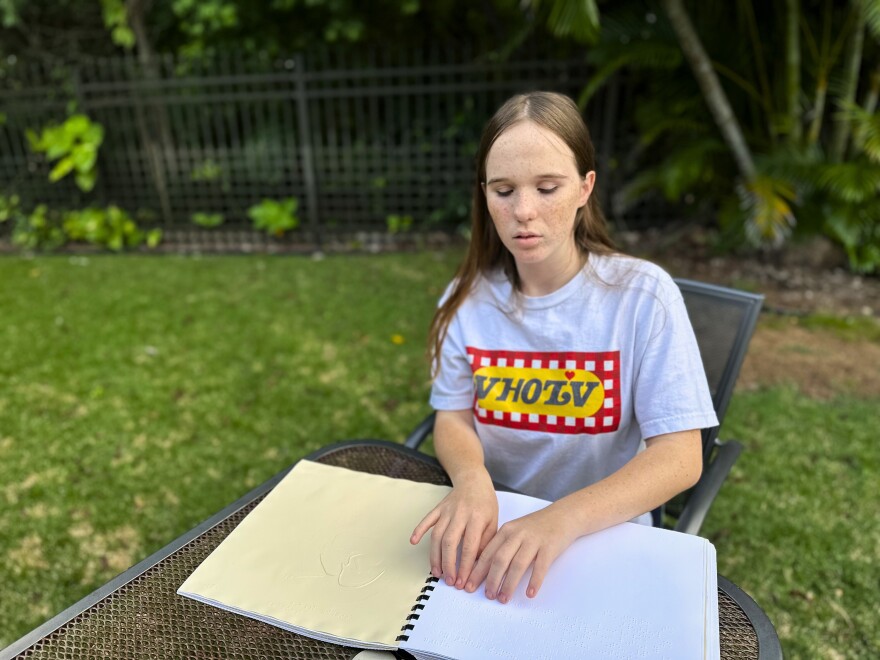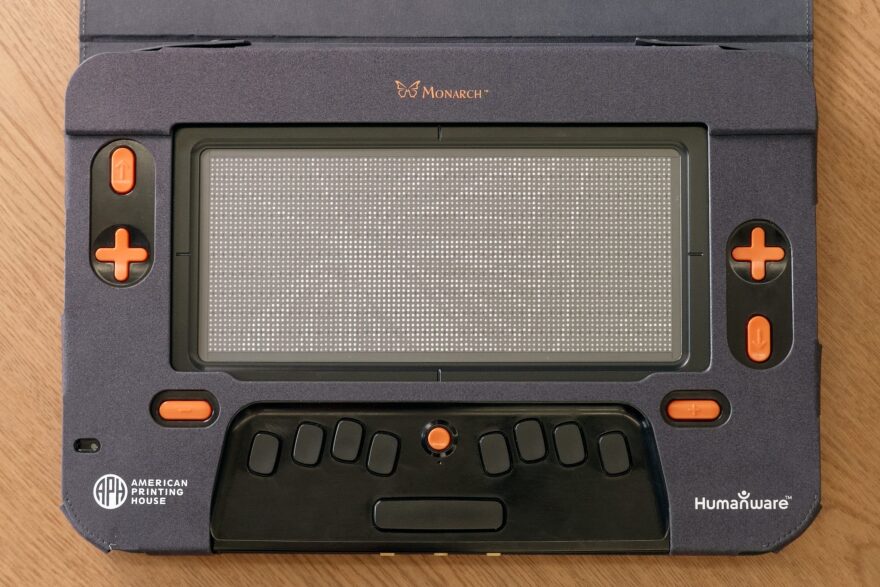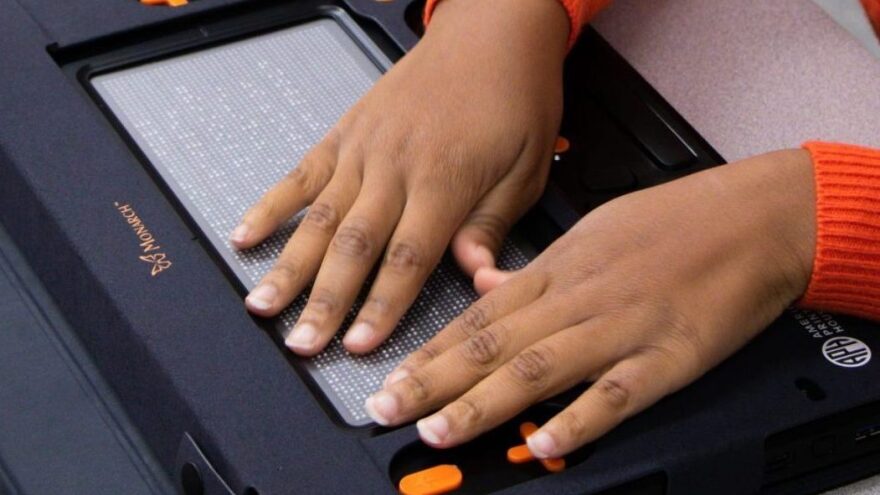When it came time for her exams, Eme Mitchell-Butler said she was prepared but nervous about questions on diagrams.
The Kalaheo High School student is blind and depends on braille and tactile graphics to understand complicated charts and other illustrations through her fingertips.
Mitchell-Butler wanted to be a biochemist, so she took advanced biology, trigonometry and physics.
But she hasn't always received her textbooks on time.

"So I will have to use the diagrams that I will get in my hardcopy braille test, but I've never felt them before," Mitchell-Butler said. "Therefore, I won't be able to interpret them as quickly as I would have been able to otherwise."
Mitchell-Butler's case is not unique as blind students across the U.S. can wait three to five months to get their hardcopy braille.
Braille textbooks can also cost between $20,000 and $40,000 per book, according to the American Printing House for the Blind.
A new device called the Monarch may cut that waiting time. Developers have even nicknamed it the "holy braille."
Anne Lancaster of the American Printing House for the Blind said students can get it within two weeks. It will be available to the first 100 students by the 2024 academic year.

"We've known for a very, very long time that we need better solutions," she said. "We've talked about the 'holy braille' in the field for some time, which would be a tablet — a digital tablet — where you could have the equivalent of what sighted people have in a Kindle."
Lancaster said it's the first multi-purpose device to provide braille and tactile graphics on the same surface.
Existing digital devices only have one refreshable braille line, similar to reading one sentence per page. In comparison, the Monarch has 10 lines of refreshable braille that make blind students feel like they're reading a book.
Monarch weighs approximately 4.5 pounds and is about the size of a 15-inch gaming laptop. Its buttons resemble a Nintendo Switch.
Lancaster said the device was purposefully made to look like a gaming system.
"One of the things that we've learned building technology for students, in particular, is that if it doesn't look cool, they won't use it," Lancaster said.
"A lot of the early technology that was braille was kind of heavy and thick and always black with no kind of visual interest to it. What we found is that the kids were hiding them in their lockers," she said.
The device took two years to develop, in partnership with the American Printing House for the Blind, HumanWare and the National Federation of the Blind.
Lancaster said they plan to train 200 teachers on how to use the Monarch.
Why the long wait?
There are more than 24,000 Hawaiʻi residents who are sightless, according to the National Federation of the Blind.
The Hawaiʻi Department of Education has 67 blind students, said Michelle Arakawa, an educational specialist at the department's Office of Students Support and Services.
Arakawa said the department has applied for the Monarch and hopes to receive it by next year.
"It may be beneficial for some of our students, but it might not meet the needs of all of our students," Arakawa said. "But definitely for our tactile learner. This sounds like a great device to look into and get evaluated regarding their needs."

Arakawa said it takes time to order, transcribe and deliver textbooks, although she said the department works with blind students months before the new school year.
She also said the department looks to see if they have braille textbooks in specific subjects, then they look to other states who may provide them.
Arakawa said the state has no professional braille transcribers, so the department contracts with other states. And it takes time for transcribers to create braille and tactile graphics, so usually, it's sent to students in chapters.
"It is hard because teachers have flexibility," she said. "Sometimes they change the curriculum, they change the textbook, and sometimes, students change their classes. So then we are scrambling."
A work in progress
Lancaster said the Monarch is still a work in progress, adding that while it may be digital, it still needs someone to transcribe a textbook in braille and tactile graphics.
She added that the printing house is working on the electronic braille standard and electronic textbook delivery.
"While textbooks are our most important north star right now, this device does so much more right now," she said. "It will come with a graphing calculator on it, it will have the internet, it will have email, and it will have access to different book libraries. It's essentially an all-in-one tool for the student to have in the classroom."






